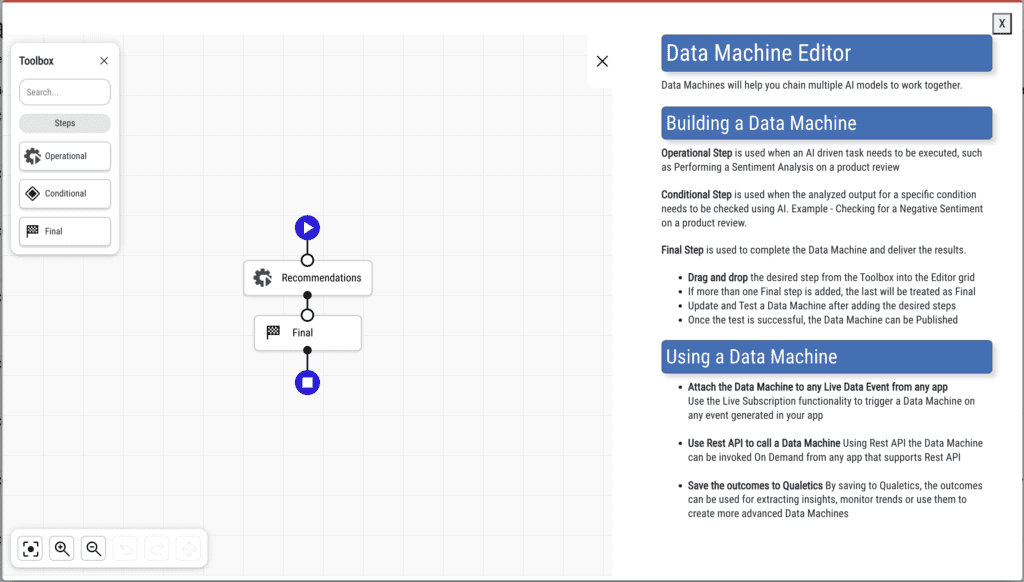AI Use Case
Building a Recommendation Engine for your App using Data Machines and their use cases
Recommendation engines are key to unlocking personalized experiences for users of software applications. Chances are that we have all seen and interacted with a software application that uses a Recommendation engine powered by Data, Analytics and AI. The most popular of such products are the likes of Amazon, Netflix, Instagram, YouTube, Spotify, LinkedIn and many others. In fact, one of the key reasons why users stay engaged on these platforms are due to their in depth understanding of a user’s behavior and their ability to provide suitable content based on their interests.
Now, it is entirely within every developer’s reach to implement a recommendation engine in any their software applications on the basis of Data and AI. We will explore this in a little more detail in an article, as part of our AI use case series, and try to understand the applications of recommendation engines and how to build one for your application using Data Machines.

What is a Recommendation Engine?
For software applications, user engagement and satisfaction are paramount for which recommendation engines are apt. Recommendation engines are intelligent algorithms that play a role in understanding user preferences and offering personalized suggestions, typically resulting in enhanced user satisfaction and increased engagement.
At its core, a recommendation engine utilizes data, often collected through user interactions, to predict and suggest items that align with a user’s preferences. Whether it’s movies, products, music, or content, recommendation engines leverage machine learning algorithms to analyze patterns and provide tailored suggestions.
Use Cases
e-Commerce Applications
Recommendation engines contribute significantly to enhancing the shopping experience. By analyzing a user’s purchase history, browsing behavior, and preferences, these engines can recommend products that align with the user’s tastes, ultimately increasing the likelihood of a purchase. This benefits the users by saving them time and also boosting revenue for businesses.
Content Consumption
Streaming services rely heavily on recommendation engines. By understanding a user’s viewing habits, genre preferences, and ratings, these algorithms can offer personalized content suggestions. This not only keeps users engaged but also helps platforms retain subscribers.
Social Networking
Recommendations help users discover new connections and content that align with their interests. By analyzing user profiles, engagement history, and shared interests, these algorithms facilitate meaningful connections and help build communities that align on common interests.
Building a Recommendation Engine with Data Machines
Data Machines provides a simple no-code development interface to build and test a Recommendation engine based on the activity and interaction data of users from any software or business app. Once the Recommendation Data Machine is built, it can be easily integrated into any software application using simple Rest API based integration, Webhooks or Zapier. The technical details of the model such as the input(s) required and the outputs are available here.
For the Recommendation Engine to provide accurate results, the activity and interaction data of all users of the app has to be continuously gathered to ensure that users receive the most accurate recommendations. The same Recommendation engine you build can be used multiple times by connecting it to any application where you want to provide recommendations to users, allowing it to train against and deliver unique and accurate insights for each app it is connected to.
To build a simple recommendation engine, use the Data Machines interface in your Qualetics Portal to build it in a few simple steps.
Prerequisite: Setup Qualetics Data Streaming Integration
- Login to your Qualetics Portal
- Connect your software application to Qualetics Data Streaming to capture the activity data of the users
- Ensure that data is being streamed by using Qualetics Live Analytics or any of the processed insights
- If user activity data is streaming successfully, the Qualetics platform will start analyzing activity data of users
Create A Recommendation Engine Data Machine
- Click on the Data Machines navigation menu in the left navigation
- Click on Add Data Machine
- Drag an Operational Step from the toolbox
- Select “Activity Models” in the category
- Select “Recommendations” in the list of models
- Drag and Drop the Final Step from the toolbox
- Configure the options in the Final step based on your need
- Test the Data Machine
- Publish the Data Machine, if the Test is successful
- Integrate the Data Machine using the available Rest API options or No Code options using Zapier
Checkout the video below to see the steps in action.
Recommendation engines are becoming a cornerstone in modern software applications, shaping personalized experiences and driving user engagement. Their ability to analyze user data, understand preferences, and offer tailored suggestions makes them indispensable in the competitive landscape of digital platforms.
Qualetics Data Machines provides the shortest path possible to embed recommendation engines into any software application helping businesses accelerate their adoption of AI and Machine Learning based innovations to increase customer satisfaction, engagement and revenue generation.
Sign Up For a Free Trial
To learn more about Data Machines and get started with building your own AI solutions, sign up for a Free trial and start building today.
Sign Up As a Partner
If you’re a Software Development firm looking to rapidly build AI solutions for your customers, Data Machines offer you the best possibilities. Reach out to us here.